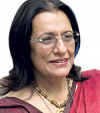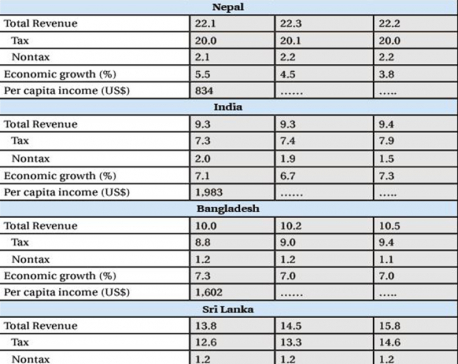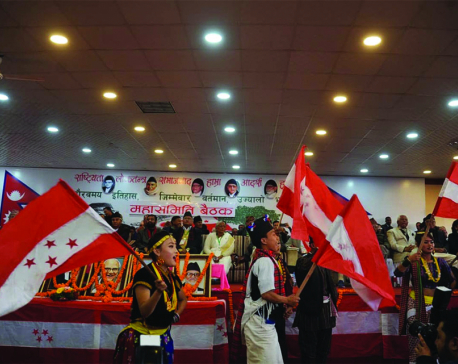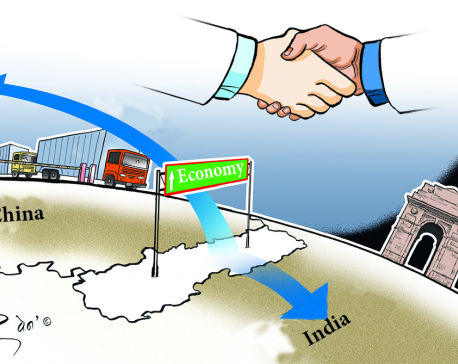
OR


Dr Poonam Khetrapal Singh
The author is the World Health Organization Regional Director for South-East Asianews@myrepublica.com
Comprehensive screening, vaccination and treatment, including of pre-cancerous lesions, is crucial for eliminating cervical cancer
Cervical cancer is a deadly threat to women’s health. Across the world, the disease kills one woman every two minutes, with women between the ages of 30 and 49 most at risk of developing it. But while cervical cancer can affect all women everywhere, its impact is far from uniform: Nearly 90 percent of the women cervical cancer kills are in low- and middle-income countries, including those of the WHO South-East Asia Region. As the numbers show, cervical cancer is at the core of intersecting inequalities, both global and local.
Tackling the problem is critically important. Though the Region accounts for just over a quarter of the world’s population, it represents 28 percent of the 570 000 new cases reported every year. More egregiously, in 2018 the Region accounted for 30.7 percent of the 311 000 deaths attributed to the disease annually, equating to more than 95 000 deaths. Despite the world-beating progress member states have made in women’s health (most notably on maternal health), women continue to be left behind when it comes to preventing, detecting and treating cervical cancer, including pre-cancerous lesions.
WHO and its member states are working to change that. As per the Region’s Flagship Priorities, which each member state helped develop, all countries are committed to investing in ‘best-buys’ aimed at preventing noncommunicable diseases (NCDs), including cervical cancer, as well as achieving universal health coverage (UHC), which will enhance services that will help prevent HPV infection through vaccination, aid early detection and provide pre-cancer treatment. Importantly, member states are also committed to implementing the Region’s own Strategic Framework for the comprehensive control of the problem, as well as the many training packages WHO has produced to support health workers at all levels.
The potential for the Region to accelerate progress and harness key innovations is nevertheless ripe. In May 2018, for example, WHO Director-General Dr Tedros Adhanom Ghebreyesus made an unprecedented call to eliminate the disease as a public health problem, highlighting the need for high-level buy-in, including from global partners. In February this year WHO’s Executive Board noted the urgent need for decisive action, bringing the issue to the World Health Assembly in May. Come that time, member states, including from the South-East Asia Region, will have the opportunity to lend their voice to what is a growing chorus to eliminate the disease and achieve a massive win for women’s health. Each and every vote will count.
As WHO has made clear, access to the human papilloma virus (HPV) vaccine is crucial to driving rapid and lasting change. Why? Because although most types of HPV infections do not cause cervical cancer, almost all cases of cervical cancer are caused by HPV. By providing two doses of the HPV vaccine to girls between the ages of nine and 14 they can be better protected against HPV-caused cervical cancer, thereby dramatically reducing the disease’s burden. They can also be provided information that promotes healthy behavior that can help prevent cervical cancer. To date, Bhutan, Sri Lanka, Thailand and, most recently, the Maldives have introduced the vaccine nationally, while India’s Sikkim state has made the vaccine part of its routine schedule. Bangladesh, Indonesia, Nepal and several Indian states have conducted pilot projects.
These initiatives are to be commended. Where absent, they should be pursued. But as crucial as national commitment is, other factors are at play, from vaccine procurement and supply issues to pricing and sustainability, especially as economies grow and countries transition away from external assistance. While innovative regional mechanisms such as the South-East Asia Regulatory Network can have a powerful impact (especially on price transparency and collective bargaining), concerted action is needed to overcome vaccine supply constraints to better reflect member state ambition. That is, in part, why supporting a global push is so important.
Still, vaccination alone is no silver bullet. It must be accompanied by increased access to health services and a sufficient and affordable supply of screening and treatment technologies, including for pre-cancerous lesions. Screening is recommended for every woman from age 30 and regularly after that. Though all countries in the Region have incorporated these measures in national cervical cancer screening plans, implementation—especially at the primary level—should be significantly increased as part of the broader drive toward UHC, alongside efforts to better integrate services. This requires member states to enact the pro-active measures needed, as well as promote global buy-in via the World Health Assembly and an action-oriented high-level meeting on UHC at the UN General Assembly later this year.
WHO will remain steadfast in its support to member states to leverage the full range of interventions to prevent, detect and treat cervical cancer throughout the life-course. In doing so, it will also remain steadfast in helping them leverage global momentum and the innovations needed to make rapid advances to eliminate cervical cancer as a public health problem. Together we must raise our voice and highlight the unconscionable burden women across the Region have borne for far too long. Together we must accelerate progress to eliminate cervical cancer once and for all.
The author is World Health Organization Regional Director for South-East Asia
You May Like This

Tax exploitation in Nepal
High taxation policy pursued by Nepal has worked as a powerful drag on the economy by hurting private sector incentive... Read More...

Path of peril
Even though politics of here and now demands repositioning of Nepali Congress, playing to the religious gallery might prove to... Read More...

Tap the opportunities
Low level of economic integration combined with untenable trade deficit is making Nepal vulnerable to external shocks ... Read More...







Just In
- Govt appoints 77 Liaison Officers for mountain climbing management for spring season
- EC decides to permit public vehicles to operate freely on day of by-election
- Fugitive arrested after 26 years
- Indian Potash Ltd secures contract to bring 30,000 tons of urea within 107 days
- CAN adds four players to squad for T20 series against West Indies 'A'
- ‘Precast' technology introduced in the construction of bridges along Muglin-Pokhara road
- Leopard attack injures young man in Kanchanpur
- SC rejects writ petition filed against Home Minister Lamichhane












Leave A Comment